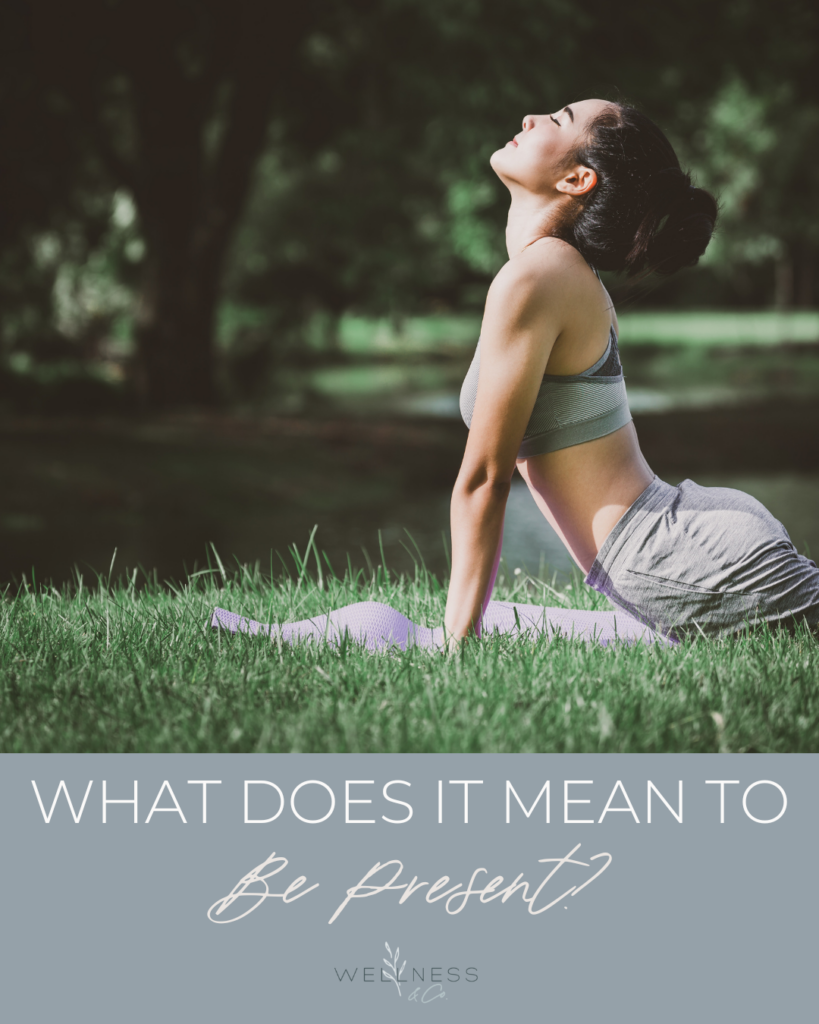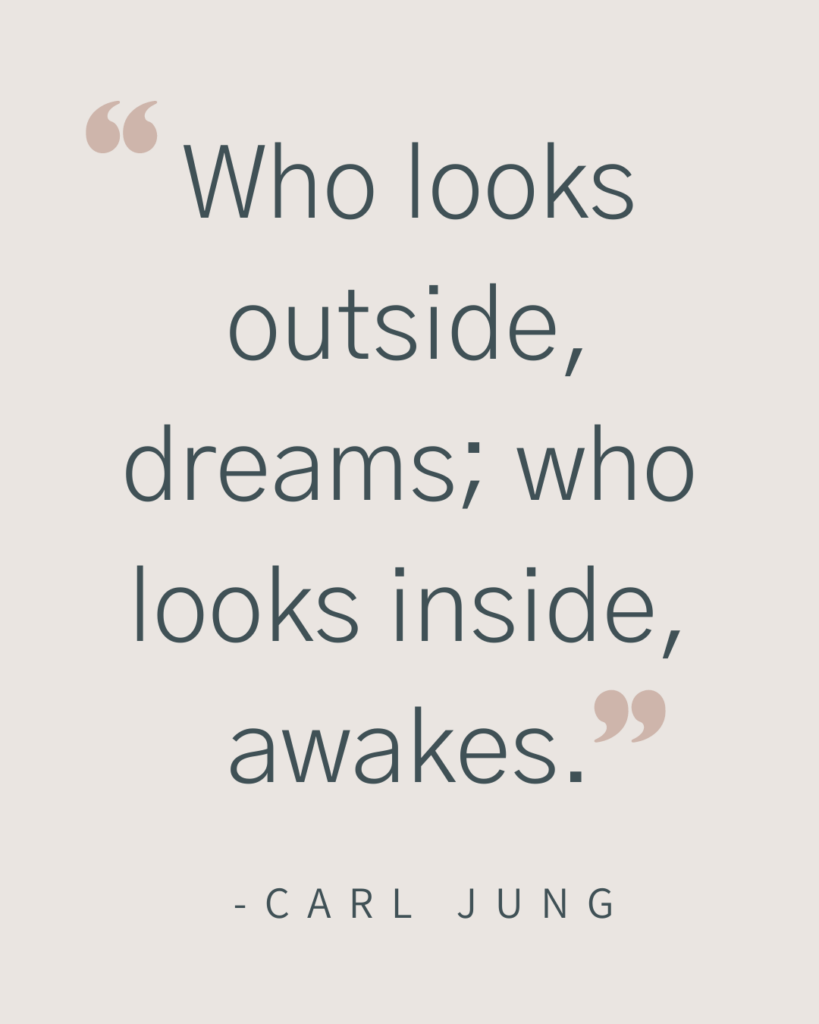Follow
Wellness & Co.
Hi, I'm Dr. K, Wellness & Co. is a growing therapy/coaching practice and educational hub for prospective clients based in Maryland and virtual clients all over the world!
Hi, I'm Dr. K
free guide
e -books
e -course
What Does It Mean to Be Present?
June 18, 2024
By Rebecca Horch, BACYC, CPC
READING TIME: 4 MINUTES

We often hear phrases like “Practice presence,” “Be in the moment,” and “Always be mindful”, in therapeutic and spiritual spaces. But what does this actually mean, and how do you achieve it? Mindfulness and presence are transformative practices that profoundly impact your life. As Carl Jung noted, “Who looks outside, dreams; who looks inside, awakes.” By turning our attention inward and grounding ourselves in the present moment, we unlock deeper self-awareness and genuine connection.

Embracing mindfulness is a journey requiring patience and compassion. It’s about showing up fully, recognizing thoughts and emotions without judgment, and responding with intention rather than reaction. This practice isn’t always easy – it involves confronting inner struggles and embracing vulnerability. Yet, it cultivates resilience, deepens emotional intelligence, and strengthens empathy and compassion.
Mindfulness helps us break free from autopilot mode, fostering creativity and innovation. It’s not just about reducing stress – it’s about being fully present, appreciating the here and now, and enhancing our well-being.
By practicing mindfulness and presence, we can navigate life’s challenges with greater clarity and grace, build deeper connections, and live more purposeful lives. This inward journey, while sometimes difficult, is key to awakening our true selves and creating a balanced, enriched existence.
Starting this practice is not complicated. It’s okay to start small, recognizing that building the habit is valuable in itself.
Here is a small challenge: Write down the list below on small pieces of paper and put them in a jar. Each day, randomly choose one and engage with it for 1 or 2 minutes. There is no “right or wrong” way to do this. Think of mindfulness as building the muscle of being present. Each time your mind wanders and you bring it back, it’s another “rep” for mental strength.
Practices that incorporate mindfulness, presence, and gratitude for your life:
Focus on Your Breath
Spend a minute focusing solely on your breath. Breathe in slowly for a count of four, and then exhale for a count of four. As your mind inevitably wanders, gently bring your attention back to your breath each time without judgment. The goal isn’t to achieve perfection but to engage in the practice of returning your focus.
Observe Your Surroundings
Choose an object around you – a plant, a piece of art, or even your hand. Spend a minute observing it closely, as if you are seeing it for the very first time. Notice its colors, textures, shapes, and any other details. This practice helps ground you in the present moment.
Mindful Routine
Take a daily routine task, like washing dishes or getting dressed, and give it your full attention. Notice every step and sensation involved in the process. Feel the water’s temperature, observe the movement of your hands, and listen to the sounds. This transforms mundane activities into opportunities for mindfulness.
Deep Listening
Select a piece of music and immerse yourself in it completely. Use headphones to minimize distractions, and focus on the different elements of the music – the rhythm, melody, and any instruments. Listen without judging, simply experiencing the music in its entirety.
Practice Gratitude
Take a moment to reflect on something you’re thankful for in this moment. It could be the sun shining through the window, warming your cheek, the sound of children’s laughter in the next room, the smell of dinner cooking in the oven, or the feeling of contentment after finishing a workout. Write it down or simply hold it in your mind for a minute, savoring the feeling of gratitude.
Grounding with Nature
Step outside, if possible, and connect with nature. Feel the ground under your feet, listen to the sounds around you, and notice the smells in the air. Spend a few minutes just being present with the natural world, letting it ground you in the here and now.

Body Scan
Slowly bring your awareness to different parts of your body, noticing any sensations. Start from your toes and move upwards, or begin at your head and work your way down. This helps you connect with your body and brings a sense of calm and presence.
Mindful Eating
During your next meal, take the time to savor each bite. Pay attention to the flavors, textures, and smells of your food. Eat slowly and mindfully, appreciating the nourishment and the experience of eating.
Silent Sitting
Find a quiet place to sit for a few minutes. Close your eyes and just be. Let your thoughts come and go without attachment. Simply sit in silence and observe what arises, allowing yourself to be fully present in the moment.
Sit With Your Emotions
Take a moment to sit quietly and focus on an emotion you’re currently experiencing. Instead of dwelling on the situation that caused it, direct your attention to the physical sensations in your body. Notice where you feel tension, warmth, or discomfort. Allow yourself to fully experience these sensations without trying to change or judge them. Just observe and breathe through the feeling, acknowledging its presence. This practice helps you connect with your emotions more deeply and cultivates a sense of acceptance.
Start small, be patient with yourself, and remember that every moment of mindfulness and presence is an opportunity to infuse your life with intention and meaning. You don’t have to “try harder” to achieve this state – it can happen right now, in this very moment. Simply allowing yourself to be fully present, even in the smallest of moments, opens the door to a more enriched and fulfilling existence.
Be with you again soon,
Rebecca
Rebecca strives to support others in building resilience, self-compassion, connected relationships and self-awareness. She loves to work with people who are ready for the hard work of inner growth and is passionate about helping others tap into their intuitive gifts and use them in this world.
Leave a Reply Cancel reply
CONTACT
Start Here
BLOG
OUR TEAM
SHOP
ABOUT
©2025 Wellness & Co. | All Rights Reserved | Design by EverMint Design Studio
BACK TO TOP
connect with us on instagram
